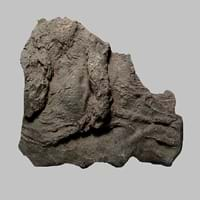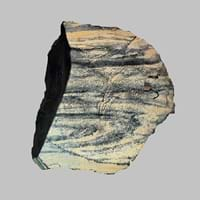Definition
During the impact melted material forming a breccia containing glass and crystal or lithic fragments together form Suevite rock.
Oil Shale is a fine-grained sedimentary rock from which oil is extracted
Origin
Canada, Germany
Unknown
Discoverer
Unknown
Unknown
Etymology
No etymologies found
From Old English scealu in its base sense of thing that divides or separate
Class
Metamorphic Rocks
Sedimentary Rocks
Sub-Class
Durable Rock, Medium Hardness Rock
Durable Rock, Soft Rock
Group
Not Applicable
Not Applicable
Other Categories
Coarse Grained Rock, Opaque Rock
Fine Grained Rock, Opaque Rock
Color
Black, Brown, Colourless, Green, Grey, Pink
Black, Brown, Buff, Green, Grey, Red, Yellow
Durability
Durable
Durable
Interior Uses
Decorative Aggregates, Homes, Interior Decoration
Not Yet Used
Exterior Uses
As Building Stone, As Facing Stone, Garden Decoration, Office Buildings
Not Yet Used
Other Architectural Uses
Curbing
Not Yet Used
Construction Industry
As Dimension Stone, Cement Manufacture, for Road Aggregate, Making natural cement, Manufacture of Magnesium and Dolomite Refractories
Cement Manufacture, Construction Aggregate, for Road Aggregate, Serves as an Oil and Gas Reservoir rock
Medical Industry
Not Applicable
Not Yet Used
Antiquity Uses
Artifacts, Monuments, Sculpture
Artifacts
Commercial Uses
As a Feed Additive for Livestock, Gemstone, Metallurgical Flux, Source of Magnesia (MgO)
An Oil and Gas Reservoir
Types
Phyllosilicates, Calcite
Carbonate-rich Shale, Siliceous Shale and Cannel Shale
Features
Host Rock for Lead
Easily splits into thin plates, Generally rough to touch, Is one of the oldest rock, Very fine grained rock
Archaeological Significance
Monuments
Used
Not Yet Used
Famous Monuments
Data Not Available
Not Applicable
Sculpture
Used
Not Yet Used
Famous Sculptures
Data Not Available
Not Applicable
Pictographs
Used
Not Used
Petroglyphs
Used
Not Used
Figurines
Used
Not Yet Used
Formation
Suevite is a metamorphic rock consisting partly of melted material, typically forming a breccia containing glass and crystal or lithic fragments, formed during an impact event.
Oil Shale forms on the beds of seas and lakes and its formation starts with the organic debris settling and accumulating at the bottom of a lake or sea which are then transformed into rock with the help of high temperature and pressure.
Mineral Content
Coesite, Quartz, Stishovite
Albite, Biotite, Calcite, Chert, Chlorite, Dolomite, Hematite, Micas, Muscovite or Illite, Pyrite, Quartz, Silica, Sulfides
Compound Content
CaO, Carbon Dioxide, MgO
Ca, Fe, Mg, Silicon Dioxide, Sodium
Types of Metamorphism
Burial Metamorphism, Cataclastic Metamorphism, Contact Metamorphism, Hydrothermal Metamorphism, Impact Metamorphism, Regional Metamorphism
Not Applicable
Types of Weathering
Not Applicable
Biological Weathering, Chemical Weathering, Mechanical Weathering
Types of Erosion
Not Applicable
Chemical Erosion, Sea Erosion, Water Erosion
Grain Size
Coarse Grained
Very fine-grained
Fracture
Uneven
Not Available
Streak
Light to dark brown
White
Porosity
Less Porous
Highly Porous
Toughness
Not Available
2.6
Specific Gravity
2.86
2.2-2.8
Transparency
Opaque
Opaque
Density
2.8-2.9 g/cm3
2.4-2.8 g/cm3
Resistance
Heat Resistant
Heat Resistant, Impact Resistant
Deposits in Eastern Continents
Asia
Not Yet Found
Bangladesh, China, India, Israel, Jordan, Russia, Syria, Thailand, Turkey
Africa
Not Yet Found
Ethiopia, Kenya, Morocco, South Africa, Tanzania
Europe
England, France, Germany, Great Britain, Netherlands, Sweden, Switzerland, United Kingdom
Austria, France, Germany, Greece, Italy, Romania, Scotland, Spain, Sweden, Switzerland
Others
Not Yet Found
Greenland, Not Yet Found
Deposits in Western Continents
North America
Not Yet Found
Canada, USA
South America
Not Yet Found
Bolivia, Brazil, Chile, Colombia, Ecuador, Peru, Venezuela
Deposits in Oceania Continent
Australia
Not Yet Found
New South Wales, New Zealand, Queensland, Victoria, Western Australia
All about Suevite and Oil shale Properties
Know all about Suevite and Oil shale properties here. All properties of rocks are important as they define the type of rock and its application. Suevite belongs to Metamorphic Rocks while Oil shale belongs to Sedimentary Rocks.Texture of Suevite is Earthy whereas that of Oil shale is Splintery. Suevite appears Banded and Oil shale appears Muddy. The luster of Suevite is earthy while that of Oil shale is dull. Suevite is available in black, brown, colourless, green, grey, pink colors whereas Oil shale is available in black, brown, buff, green, grey, red, yellow colors. The commercial uses of Suevite are as a feed additive for livestock, gemstone, metallurgical flux, source of magnesia (mgo) and that of Oil shale are an oil and gas reservoir.










